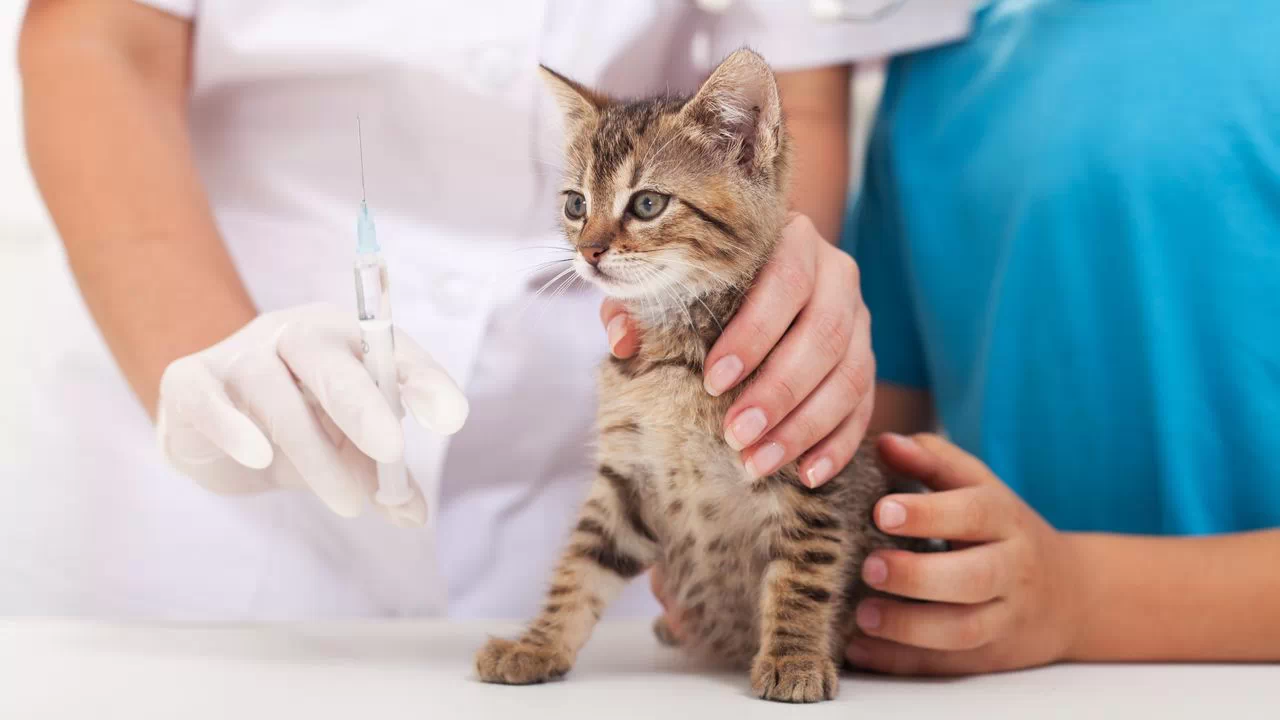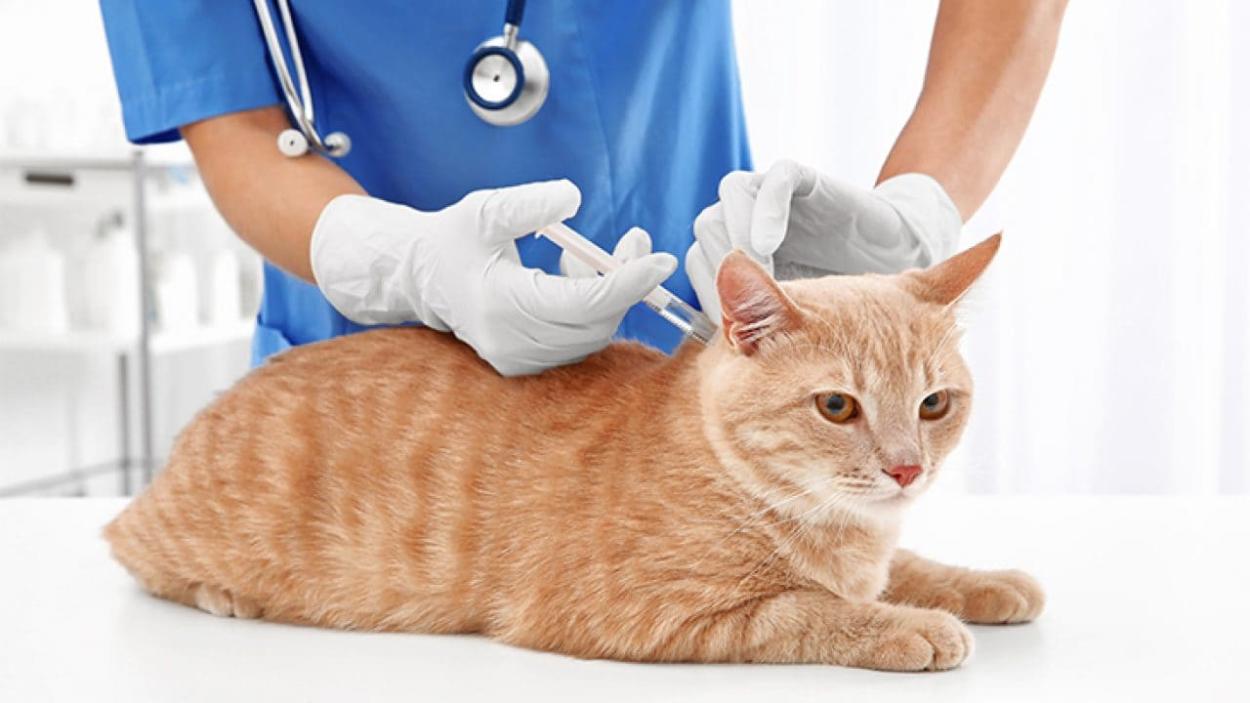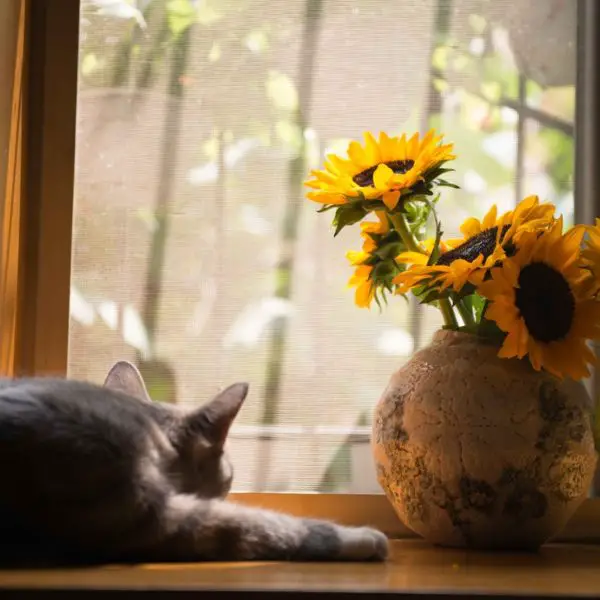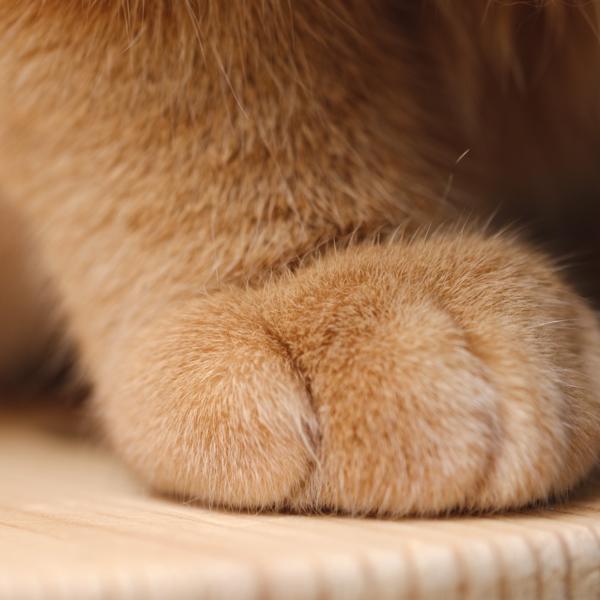Panleukopenia is unfortunately an inevitable disease, designed by nature to thin out a feline population that reproduces uncontrollably. By doing the right thing, we can reduce the spread of the disease and save many cat lives.
What Is Panleukopenia?
Panleukopenia is a feline viral acute disease with a very high mortality rate (over 90%).
It is caused by the parvo virus, which enters the body through the mucous membrane and causes a general drop in leukocytes, and secondary symptoms of gastrointestinal tract disorders soon appear.
How Is The Parvo Virus Transmitted?
Panleukopenia is a major problem among the unvaccinated cat population because the virus itself is highly resistant and persists for up to 6 months in otherwise unfavorable conditions.
It is resistant to all natural ambient temperatures and to all common disinfectants (including medical alcohol, iodine, all types of Plivasept).
It is transmitted by direct and indirect contact, which means that a sick and healthy cat must never even see each other, but it is possible to infect a healthy cat through your (washed) hands, (washed) bowls, clothes, transporters, cars, and the virus is possible transferred and on shoes to the apartment.
How Can I Prevent The Spread Of The Parvo Virus?
The only reliable disinfectant that effectively and quickly kills the parvo virus is potassium peroxymonosulfate (Ekocid S, Virkon S).
The surface to be disinfected should first be mechanically cleaned (preferably with chlorine solutions, eg Domestos, as they also deactivate the virus to some extent), and the Ecocide mist should be sprayed on a clean surface, taking care to disinfect all contaminated objects / fabrics in parallel. , which includes your hands, clothes and the syringe you are using.
The ecocide should be rinsed thoroughly, with as warm water as possible, preferably hot heated water or a steam cleaner, as temperatures of 100 degrees onwards also partially kill it.
Ecocide does not bleach or leave marks on clothes if used properly (more dilute ratio in the mist), and should not be rinsed in this form. That way you can disinfect your clothes, cat scrapers and furniture, but anything you can throw away – throw away. It is advisable to repeat the disinfection for as long as the cat has symptoms of the disease, because then it secretes the virus the most. If you have been in contact with a cat with panleukopenia, it is best not to approach unvaccinated cats at all until the affected cat has recovered / died and been thoroughly disinfected.
You can buy Ecocid from a veterinarian or in veterinary pharmacies. The price is around $3 for one bag with which you can make 5l of disinfectant solution.

What Are The Symptoms Of Panleukopenia?
Once the virus enters the body, the incubation time begins. Incubation can last 3-10 days, but usually lasts 5-7 days.
The first symptom is refusing a meal due to a feeling of nausea.
If you measure your cat’s temperature at that moment, you will notice that it is elevated and you should go to the vet even then.
Whether it is panleukopenia or not, a cat that has a fever will always refuse food and needs veterinary care.
The next symptom is vomiting of food eaten. Although the veterinarian received stomach sedatives and an injectable antipyretic and an infusion, panleukopenia is characterized by the cat continuing to vomit despite veterinary intervention.
After a while, she no longer vomits food, not even saliva, but a yellowish liquid with a specific smell in quantities that she did not take into the body.
Due to abdominal pain and general weakness, the cat is kept squatting, often next to a bowl of water.
Diarrhea from the blood may or may not be present – depending on the acute course of the disease.
As the animal loses fluid through vomiting and diarrhea, and as the disease progresses, body temperature begins to fall below average, regardless of medication.
The animal should now be additionally heated with an electric heater (or plastic hot water bottles) and a warm infusion, because when the body temperature drops too much, the internal organs begin to fail and the animal soon dies.
From the beginning of the disease to the death itself, usually no more than 2-3 days pass. The so-called galloping panleukopenia, the kitten may die within one day.
If a cat survives the third day, its chances of survival are greatly increased because its body is thought to actively produce antibodies and defeat the virus.
Is There A Cure For Feline Panleukopenia Virus?
Although in many places there is no registered cure for panleukopenia, some veterinarians use Feliserin, an immunoglobulin for feline parvovirus.
In some European countries (Germany, Austria, Switzerland) there is a drug for feline parvovirus, called Feliserin, which contains ready-made antibodies to panleukopenia, and two other viral diseases – calici virus and rhinotracheitis.
How To Treat The Panleukopenia Virus?
If you have Feliserin, give cats up to 3 months of age 4 ml intramuscularly immediately, and cats older than 3 months 6-8 ml intramuscularly, and repeat for the next 3 days.
It can also be given subcutaneously, but absorption through the muscles is much faster, which is crucial for such an acute disease.
If you do not have enough Feliserine, it is important to give the first dose completely and hope that you will buy the cat a day more to create antibodies on its own.
If you have more cats that have already developed the first symptoms and too little Feliserin, give the medicine to one who still has a fever (above 39), as they are more likely to help Feliserin – from our experience, to a cat whose body temperature is already fell below 38 degrees, he did not help.
Although forms of the parvo virus specific to one species (e.g., both human and porcine parvo virus) do not spread to another, it is possible (exclusively) for a cat to become infected with a mutation in feline parvo virus; The CPV-2b form of the feline virus causes a disease in cats that closely resembles panleukopenia, in which case Feliserin helps.
We can’t know what form of parvo virus the cat has, so it’s good to try Feliserin as well
In addition to any immunoglobulin (Feliserin), supportive therapy should be given to the animal:
- lower the body temperature if it is too high (above 40), or warm the animal if its temperature is too low (below 38)
- continuously give antiemetics (injection only, because the tablets will vomit)
- introduce a cannula and infuse the cat daily (NaCl, give Glucosaline as needed if the cat survives the second day)
- give absolutely no food or water to the mouth, unless the cat shows an appetite give some water and a teaspoon of diet food every few hours
- it is better that the cat does not eat or drink at all, because by vomiting which food causes it will lose all food and water from the body
- an infusion should be given instead of food and water

How Should I Act If My Cat Often Vomits?
Vomiting in itself does not have to, and very often does not, is exclusively related to panleukopenia. Many other conditions can cause vomiting, so we need to rule out some first:
- the cat behaves normally despite vomiting (eating and playing)
- the cat has eaten something wrong or is plagued by parasites; no fever
- the cat is vomiting and has a fever; however, after medication at the vet, her appetite returns within 2-3 hours
- the cat vomits occasionally for days; but is still alive
Acute pancreatitis can cause similar symptoms to panleukopenia, so it is definitely recommended to draw blood and make a blood picture when introducing a cannula.
If the leukocytes are elevated or normal – you can rule out panleukopenia, because it is characterized by leukopenia (too low number of leukocytes).
However, leukopenia itself does not necessarily indicate panleukopenia, because leukocytes are reduced in every virus, even in the ordinary one, which can go almost unnoticed.
What About Other Cats?
If there is a suspicion that a sick cat has been in direct or indirect contact with other unvaccinated cats, other cats should be immediately vaccinated with a vaccine containing live modified virus (not dead/inactive !) – e.g. Felocell, Purevax, Versifel.
This is very important, because in working with many veterinarians I have been constantly receiving opposite advice, e.g. never vaccinate a cat for the next xy months if it has “seen” parvo.
However, it has been shown that due to vaccination with live modified virus, antibodies to parvo virus begin to form in the first few hours, and within 72 hours the immunization is complete (while in dead / inactive vaccines the first protection occurs only after 10 days).
Simple math can lead to the conclusion that vaccinating such cats is the best prevention – namely, a sick cat begins to secrete an infectious dose of the virus only when the first symptoms begin – if you vaccinate all healthy cats that were with her on the same day you suspected contact, during the period of even minimal incubation (3 days / 72h) the cat will create complete protection and thus avoid disease.
There is often a misconception among veterinarians that it takes up to 14 days for immunization, as vaccine manufacturers state – however, standard vaccines against infectious diseases protect against three diseases – in addition to panluecopenia, they also protect against rhinotracheitis (herpesvirus) and calicivirus, and although protection from day 14 applies only to the other two listed viruses, manufacturers are required to specify the period required to create protection against all three diseases.
If The Vaccine Is A Preventative, How And When To Vaccinate A Cat?
Parvo is in small non-infectious doses all around us – on the sidewalk, in the grass, on the bus, trams and even in veterinary clinics, and very likely in your bed.
It is believed that every cat that turned one year old, whether outdoor or domestic, developed some kind of immunity to the parvo virus, because throughout its life it was systematically exposed to small non-infectious amounts of the virus and created immunity.
But vaccination is definitely recommended as a final confirmation of immunity.
Although most veterinarians would disagree, cats are vaccinated in cat shelters the moment they enter through the door. If the cat is older than 2 months and is not visibly ill, it is vaccinated immediately. The risk of subsequent infection with or transmission of parvo virus is considered to be much higher than a poor reaction to the vaccine or a breakthrough of immunity, despite the fact that the cat has not been quarantined or previously cleared of parasites.
We also use this practice and so far we have not had any negative experiences.
Revaccination is required for all cats that received their first vaccine as kittens, ie up to 4 months of age. Kittens, most often up to 3 months of age, carry their mother’s antibodies – including antibodies to the parvo virus. When we vaccinate them at that age, we can’t be sure that their immunity has created enough antibodies on its own, since it still uses maternal antibodies.
When they are 4 months old, it is considered that the kittens no longer have a sufficient number of maternal antibodies that would disrupt the production of their own antibodies, so then the kitten needs to be vaccinated as a confirmation for complete protection.
It is important to note that kittens at this age are most at risk of any viral disease – from 2 months of age when they begin to lose maternal antibodies, to 4 months of age when their immunity depends entirely on their own antibodies – so panleukopenia is also called kitten – because it most often affects kittens.
Revaccination of cats older than 6 months is not important in protection against panleukopenia, but is welcome in protection against rhinotracheitis and calicivirus – although it never provides 100% protection against these much more benign diseases, it requires revaccination to create stronger immunity that significantly alleviates the form of these diseases. if they do develop over a lifetime.
CONCLUSION: vaccinate your cats! This is especially true for volunteers rescuing cats from the street.
Unvaccinated cats should never be in contact with those coming directly from the street. If you are placing a new cat directly from the street in your home, immediately vaccinate all other cats you have (if they have not been vaccinated) and the newborn cat as soon as possible. Disinfect all equipment you use for stray cats or lend it to someone, after each use – a strong solution of domestos, varicin or Ecocide S.
References
- https://www.sheltermedicine.com/
- https://vetspace.2ndchance.info/



Leave a Comment